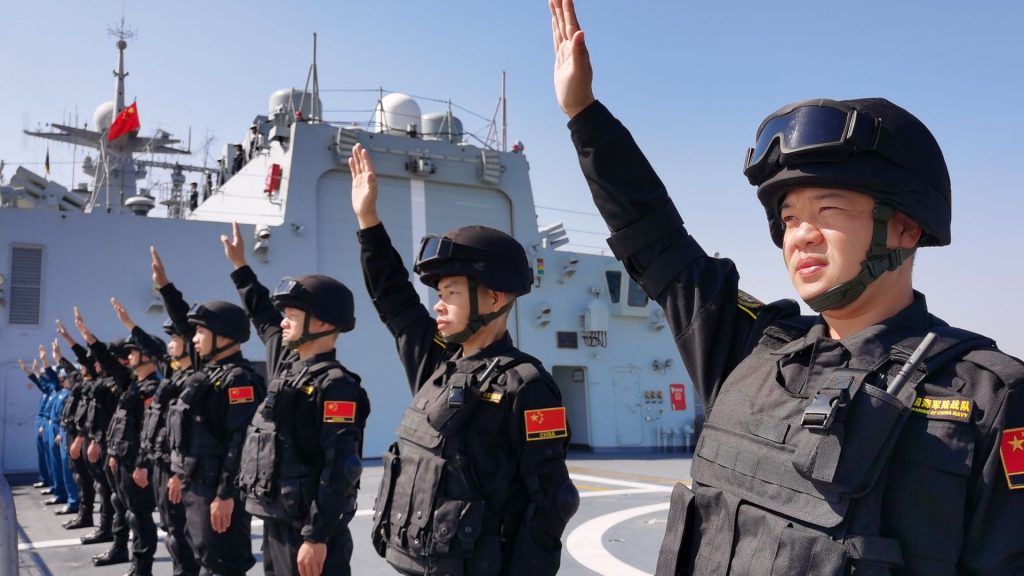A war without war: China’s gray zone activity

The People’s Republic of China doesn’t just want influence in the Indo-Pacific — it wants dominance. And it has shown the willingness to use every tool short of open warfare to get there. These so-called “gray zone tactics” — actions that fall between peace and war — allow Beijing to project power, pressure neighbors and advance its regional ambitions while avoiding the consequences of direct conflict.
Researchers at the RAND Corporation documented nearly 80 distinct gray zone tactics used by China over the past decade against countries like Taiwan, Japan, Vietnam, India and the Philippines. These range from cyberattacks and propaganda campaigns to economic coercion and maritime intimidation.
Advancing without attacking
Gray zone tactics are designed to exploit ambiguity. Instead of tanks or missiles, China uses influence operations, paramilitary forces and economic leverage. RAND analysts say Beijing sees these activities as a natural extension of state power — tools to “pressure countries to act according to Beijing’s interests without triggering backlash or conflict.”
The Center for Strategic and International Studies (CSIS) calls this approach “advancing without attacking.” For example, around Taiwan, China deployed thousands of so-called fishing vessels that act less like commercial boats and more like state-aligned operatives. Many go dark, switch identities or loiter in military exercise zones. CSIS identified at least 128 likely gray zone actors near Taiwan in 2024. The vessels spent far more time shadowing Chinese military drills than actually fishing.
According to the report, “These vessels are not engaged in routine commerce. They are instruments of political warfare at sea.”
Unbiased. Straight Facts.TM
Researchers identified at least 128 Chinese craft that could be labeled “gray zone vessels” operating near Taiwan in 2024.

Tools of coercion
The PRC’s gray zone arsenal spans several domains:
- Cyber and Information Warfare: Chinese-linked campaigns targeted Taiwanese elections and spread disinformation online.
- Economic Pressure: Beijing uses trade restrictions, tourism bans, and overfishing to hurt rivals economically.
- Maritime Expansion: China builds artificial islands, installs airfields and uses the Chinese Coast Guard and maritime militia to block Filipino vessels in their own waters.
- Diplomatic Manipulation: Nations such as Nauru, Kiribati and the Solomon Islands signed new security deals with Beijing — moves experts say reflect China’s persistent pressure campaign.
These efforts serve a strategic purpose. By normalizing constant presence — whether through ships near Taiwan or construction in disputed waters — China conditions the region to accept its dominance as a matter of fate.
Why the gray zone matters
Unlike open war, gray zone conflict erodes sovereignty gradually. RAND’s framework warns such tactics undermine not only regional stability but also U.S. strategic objectives. China’s “dual-use” infrastructure — ports, airfields and communications hubs that can serve both civilian and military purposes — gives Beijing forward-deployed capabilities across the Indo-Pacific.
And because many of these operations involve civilian or state-owned paramilitary forces, attribution is murky. International law struggles to define whether China’s actions are military aggression or legitimate peacetime activity. That legal ambiguity is the gray zone’s greatest weapon.
Countering the tactics
Countering China’s gray zone activities starts with data and detection. The CSIS Futures Lab recommends creating a Coalition Joint-Maritime Anomaly Cell (CJ-MAC) — a shared intelligence hub that would track suspicious vessels, publish alerts and coordinate real-time patrols. The idea is simple: deterrence through transparency.
By exposing covert operations in near real time, the United States and its allies could raise the reputational and financial costs for Beijing. Additional recommendations include:
- Publishing a “blacklist” of repeat offenders and name vessels, owners, and insurers involved in gray zone operations.
- Developing a “Taiwan Transparency Dashboard” that visualizes Chinese military drills and vessel activity within 24 hours.
- Commissioning an annual Gray Zone Maritime Threat Estimate to assess evolving patterns.
RAND’s researchers also urge the U.S. to prioritize countering the most damaging Chinese tactics, like those targeting disputed territories or that leverage economic coercion.
Deterrence without escalation
The challenge, analysts warn, is to push back firmly without sparking a kinetic war. The CSIS says gray zone deterrence should remain rooted in law enforcement and public exposure, not direct military confrontation. By keeping responses in the realm of law enforcement, it may help prevent the current situation from spiraling into a full-on kinetic conflict. Or, at the very least, delay it.
For now, the battle for the Indo-Pacific is one fought in data, fishing boats and satellite images — where the line between peace and war remains deliberately blurred.
The post A war without war: China’s gray zone activity appeared first on Straight Arrow News.





